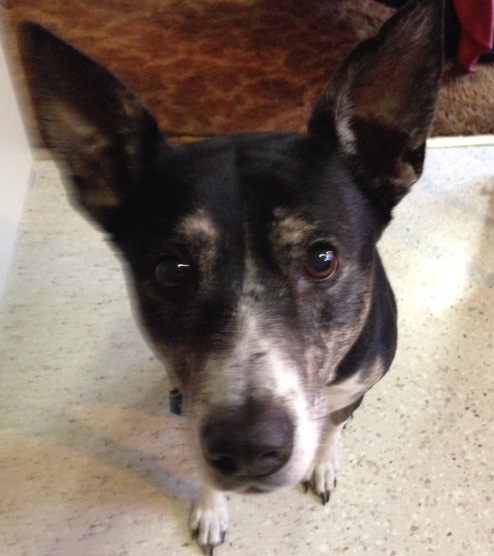
Around the time I was adopting Suki the Cattle Dog X, there was, in addition to the photo that I first fell in love with, a video of Suki’s guardian angel, Emmylou, introducing her. I didn’t see it until after Suki was mine, but I was surprised to hear that, in the video, Suki was called “Kiko”. I never really found out the story behind Suki’s name change, but I can imagine. Sometimes a word becomes “poison” to a dog…that could mean the dog associates it with something unpleasant (maybe a previous owner always called her name while jerking her choke chain), or it can mean the dog’s experience with the word makes it useless. (If a command, like “Come”, is used over and over again by the owner when the dog isn’t obeying, a savvy trainer may suggest starting in anew with “Here!”, or another cue that has no history of inconsistency associated with it.)

Anyhow, this led me to think about names. As a human, one’s name is part of one’s identity…we’re particular about it, because we identify strongly with it. Nobody likes to hear their name mispronounced, or misremembered. But what about dogs? When Suki got her name change, did she want to say, “Hey! What’s with this ‘Suki’ thing? I’m Kiko!!!” Somehow, I don’t think so. To a dog, her name is just a word that is followed by something. “If they call this word and I look, they give me a treat!”, or, “They only use that word when they’re mad at me!” Often, it’s just meant to tell your dog, “I’m talking to you!”, especially in a multiple dog household; owners say the name, and then the cue: “Suki! Sit!”. In any event, it becomes important to think about how you use your dog’s name, and what you want it to mean to the dog.
The same is true of verbal cues. In my post on “woof” training, I mentioned that I’m not ready to insert the “shush” cue yet, because the behavior is not predictably reliable. Jean Donaldson, Kathy Sdao, and other high level trainers suggest not inserting a cue until you’d be willing to bet big money that the dog will obey it. Until then, you are working on getting your dog to offer you the behavior because she knows it will get her a treat.
So, whether you’re using “capturing” or “shaping”, the cue doesn’t get inserted until you can predict that the dog will offer the behavior.
If you’re using “luring” with food, then the initial food lure, which follows the verbal cue, may, after a dozen reps, get replaced by a visual cue which looks like the lure. It’s a sort of “bait and switch”, wherein the dog still thinks you’re leading him with food, when, in reality, the hand is empty. After he produces the behavior, you still reward him, at least initially, with food, so he learns that even the empty-handed lure is a promise of a later reward. Otherwise, you get a dog who only works when you show him the food.

In any event, every time you use your cue without being able to elicit the behavior, the cue becomes less powerful, which is why it pays to think carefully about how you use words with your dog.

Great stuff! My rescue came with a name assigned arbitrarily by the rescue organization, and when I received his vet records, I realized he had had another completely different name almost since birth. (He was 4 when we got him.) He didn’t respond to his original name at all, and not to his rescue name either. So we gave him an entirely different name and it took about 4 weeks for him to catch on to it. He also knew zero commands and no vocabulary. He doesn’t show signs of abuse, it simply appears as if no one had ever spoken to him. Now we are building his vocabulary (car, walk, eat, outside, poopies, names of people and dogs he knows) although he seems to be acquiring them slowly (unless they are related to food). Other dogs we’ve had recognized 75-80 words without us putting any effort into teaching them. (I was curious, so at one point I did count!) Teaching him commands is another issue entirely, which is why I am loving Rolly’s blog. Great insights. I am learning that you, Rolly, have infinitely more patience than I. Btw, are you sure you fell in love with Suki in that photo, and not her handler? 😉
LikeLike
The big commands to concentrate on are “sit” and “come”. “Down” is good, too. These are the three commands that might keep your dog alive in an emergency. Hope you’re doing well! RE the foto, it was kind of a toss-up. 🙂
LikeLike
Suki came to us as Suki. Kiko was a name we tried hoping it would garner more interest in her. It didn’t. She was waiting for you. 🙂
LikeLiked by 1 person
Ah, another mystery solved!!! 🙂 You wouldn’t, by any chance, have a copy of that video? I’d love to have it for archival purposes. Hope you’re doing great, Kate!!
LikeLike
If I run across it I’ll send it to you but that was 2 computers ago so I don’t know.
Doing ok – looking forward to spring planting!
LikeLike